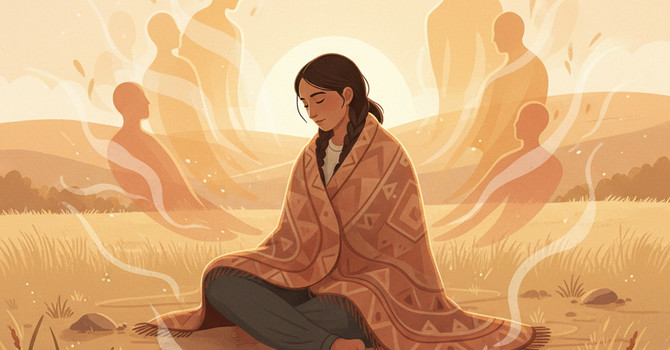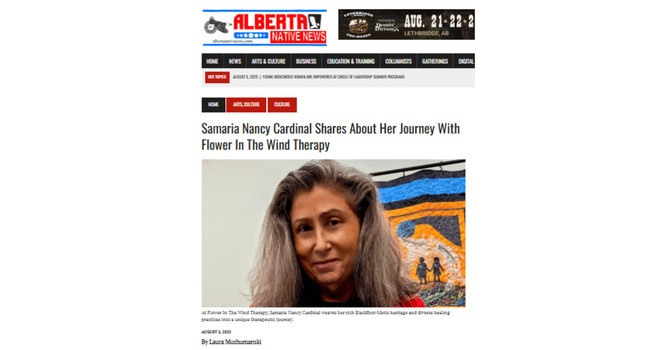
Is your mindset holding you back?
A growth mindset, a term popularized by psychologist Carol Dweck, refers to the belief that our abilities and intelligence can be developed with time, effort, and dedication. Unlike a fixed mindset, which perceives talents as innate and unchangeable, a growth mindset embraces challenges as catalysts for learning and self-improvement.
This perspective is not just transformative for academic or professional pursuits; it's a beacon for personal growth, allowing individuals to approach life's hurdles with resilience and a proactive attitude.
For Indigenous people, adopting a growth mindset can be especially empowering. It encourages an openness to new approaches, fostering a deeper connection with oneself and others. This mindset promotes a holistic view of life, emphasizing the importance of continuous learning and adaptation.
Let's look at how adopting a growth mindset can change your approach to setbacks and fuel your journey toward self-actualization.
1. Embracing Challenges as Opportunities
In Indigenous culture, challenges are often seen not as barriers but as stepping stones to personal and communal growth. This perspective aligns with the principles of a growth mindset, which is pivotal for Indigenous mental wellness:
- Perseverance: Recognize that most achievements require time and persistence. Indigenous traditions teach us the importance of patience and resilience. We can cultivate perseverance by embracing the process of learning and understanding that each effort is a step closer to knowledge
- Learning from Failure: Instead of fearing failure, view it as a vital part of growth. Indigenous wisdom often emphasizes the value of setbacks as learning opportunities. Evaluate these moments to extract lessons and strategies for future endeavours, fostering a path to holistic mental wellness.
2. The Role of Effort in Personal Development
Effort is a key player in the growth mindset arena. For Indigenous communities, personal development often ties back to cultural values, traditions, and the collective strength of the community. Here’s how effort can be a catalyst for both individual and communal growth.
- Valuing Hard Work: In many Indigenous cultures, hard work is not just about individual success but also about contributing to the well-being of the community. Recognizing that effort leads to knowledge and improved performance can empower individuals to persist through challenges.
- Celebrating Progress: Acknowledge and celebrate your efforts, not just your successes. This reinforcement encourages continued growth and learning. Whether you’re improving traditional skills or modern ones, celebrating small wins can create a positive feedback loop that drives you forward.
- Community Gatherings: Share milestones with your community during gatherings or ceremonies. This fosters a sense of belonging and reinforces the value of collective progress.
- Storytelling: Use stories to highlight the importance of effort in achieving personal and communal goals. This can be a powerful way to inspire young and old community members.
- Consistent Practice: Developing a routine incorporating regular, focused practice is crucial for enhancing your skills and knowledge.
- Traditional Practices: Include traditional crafts, dances, or languages in your daily routine. This helps preserve culture and strengthens your connection to your heritage.
- Modern Skills: Balance traditional practices with modern skills like digital literacy or entrepreneurship. This holistic approach can open up new opportunities while honouring your roots.
- The Collective Strength of Community: Effort is not just an individual endeavour; it’s a communal one. Indigenous communities can achieve greater collective well-being by working together and supporting each other's growth.
- Mentorship: Elders and experienced individuals can mentor younger members, sharing their knowledge and experiences. This exchange of wisdom ensures that valuable skills and traditions are passed down.
- Collaborative Projects: Engage in community projects that require collective effort. Whether building a community center or organizing a cultural festival, these activities foster unity and shared purpose.
3. Constructive Feedback and Learning
Feedback, when embraced with a growth mindset, transforms into a powerful tool for personal and professional development. For Indigenous communities, fostering a culture of constructive feedback can strengthen resilience, honour traditions, and drive progress in all aspects of life.
- Seeking Feedback: Actively seeking constructive criticism is a testament to our commitment to personal growth and community learning. Here's how you can do it effectively:
- Be Open to Suggestions: Approach feedback with an open mind and a positive attitude. Understand that feedback is not a personal attack but an opportunity for improvement.
- Create a Safe Space: Encourage open dialogue within your community or workplace where everyone feels comfortable sharing their thoughts. Ensure that feedback sessions are respectful and focus on development, not criticism.
- Adapting Strategies: Using feedback to refine your approach is crucial. Being adaptable and willing to adjust your approach is a mark of a growth-oriented individual. Here's how to make the most of the feedback you receive:
- Reflect and Analyze: Take time to reflect on the feedback and analyze how it can be applied to your personal or professional life. Identify patterns in your feedback to understand your strengths and areas for improvement.
- Implement Changes: Develop a plan to carry out the suggested changes in your approach. Look at the impact of these changes and be prepared to make further changes as necessary.
- Integrating Feedback into Indigenous Practices: For Indigenous communities, integrating feedback into traditional practices and modern-day activities can ensure cultural preservation while promoting innovation. Here are some ways to do this:
- Cultural Revitalization: Use feedback to enhance cultural programs, ensuring they remain relevant and engaging for younger generations. Gather input from elders and community members to maintain authenticity and respect for traditions.
- Economic Development: Apply feedback to improve community-led businesses, making them more competitive and sustainable. Encourage entrepreneurship by fostering a supportive environment where healthy criticism is welcomed and valued.
4. Cultivating Resilience Through Positive Self-Talk
Self-talk can either move you forward or hold you back. Focus on a narrative that supports growth:
- Encouraging Self-Talk: Replace self-criticism with words of encouragement. Remember that growth is a journey, and challenges are part of the landscape.
- Emphasizing Learning: When faced with difficulties, focus on what you can learn from the experience rather than a lack of ability.
Transforming Perspective, Transforming Self
Adopting a growth mindset is more than just a change in thinking—it's a transformative approach that can reshape your entire life. By viewing challenges as teachings, valuing effort, seeking honest feedback, and practicing positive self-talk, you'll find yourself better equipped to face life's hurdles and achieve your potential.
A growth mindset can empower Indigenous communities, fostering resilience, continuous learning, and deeper connections with culturally rooted practices. It's a step toward personal and communal development, honouring traditional wisdom while adapting to modern challenges.
Start integrating these growth mindset principles into your daily life, and witness the positive impact on your personal and professional life.
Ready to start your growth mindset journey? Contact us today, and let's walk this road together!
This blog's content is for informational purposes only and is not a substitute for professional mental wellness advice, diagnosis, or treatment. Always consult your qualified mental wellness provider before trying new mental health protocols.



